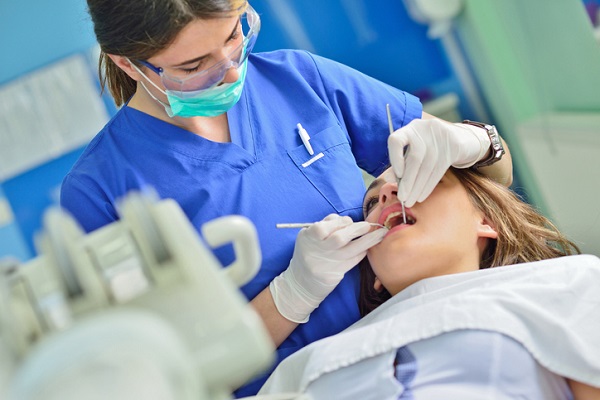
Both root planing and scaling are commonly referred to as “deep cleaning”. A typical teeth cleaning does not go as deep as these techniques, which usually require more than one appointment to complete. Deep cleaning is done to treat patients with gum disease, in particular chronic periodontitis, an infection that occurs when bacteria accumulate around the teeth and gums, which can cause serious damage if left untreated.
In some cases, periodontal surgery will be used to treat gum disease, but in less severe cases, deep cleaning is a less invasive and more common method of treatment. Read on for a few things you should know about root planing and scaling for your exciting career!
Understand What Gum Disease Looks Like in Your Dental Hygienist Career
Some dental professionals compare root planing and scaling to removing a painful or irritating splinter from the body. When plaque and tartar build up around the gumline, they can cause the pocket between the gumline and the tooth to increase in size, filling with matter. When this happens, it can cause tissue decay, bad breath, bleeding and discomfort to patients.
People may come to the dental office with these complaints, or you may notice these indicators when you are working on their teeth in an appointment. Being able to recognize these signs and symptoms in your dental hygienist career is important, as gum disease is a common issue you will encounter.
Fundamentals of Scaling and Root Planing
Manual scaling involves scraping plaque off the tooth using a scaler and curette. Bacterial plaque, toxins and tartar are scaled away from both the teeth and the part of the dental root that touches the bone. Then, root planing smoothes roughness on the root surfaces. This prevents more matter from getting stuck beneath the gumline and allows time for the patient’s tissue to heal.
While using mechanical tools is most common, sometimes an ultrasonic, vibrating wand or a laser is used to break up plaque and remove it along with bacteria. This more high-tech strategy is less painful and uncomfortable for the patient. Sometimes a combination of mechanical and ultrasonic or laser devices will be used, such as a dental chisel paired with a laser.
 Mechanical tools are common in scaling and root planing
Mechanical tools are common in scaling and root planing
How Patients in Your Dental Hygienist Career Can Try to Prevent Gum Disease
The need for scaling and root planing can usually be avoided with proper hygiene and care. In some cases, you may have patients who have high blood sugar or type 2 diabetes, both of which increase the risk of gum disease. Instances of gum disease for them will also probably progress faster than average. However, while some patients will be more prone to gum disease than others, fundamental care tips still apply.
When you become a dental hygienist, it will likely be important to you that your patients are well-educated on how they can make changes at home to take better care for themselves. Proper hygiene is the most basic way to deter periodontitis. Brushing after meals and flossing at least once a day reduces plaque, removes food particles and cleans away bacteria. Rinsing with a mouthwash afterwards can further reduce plaque and debris that might have been passed over in brushing and flossing. A healthy diet and refraining from smoking will also reduce the risk of gum disease in your patients.
 As a dental hygienist, you can help your patients understand proper hygiene techniques.
As a dental hygienist, you can help your patients understand proper hygiene techniques.
Are you interested in a diploma in dental hygiene?
Contact Oxford College for more information!






